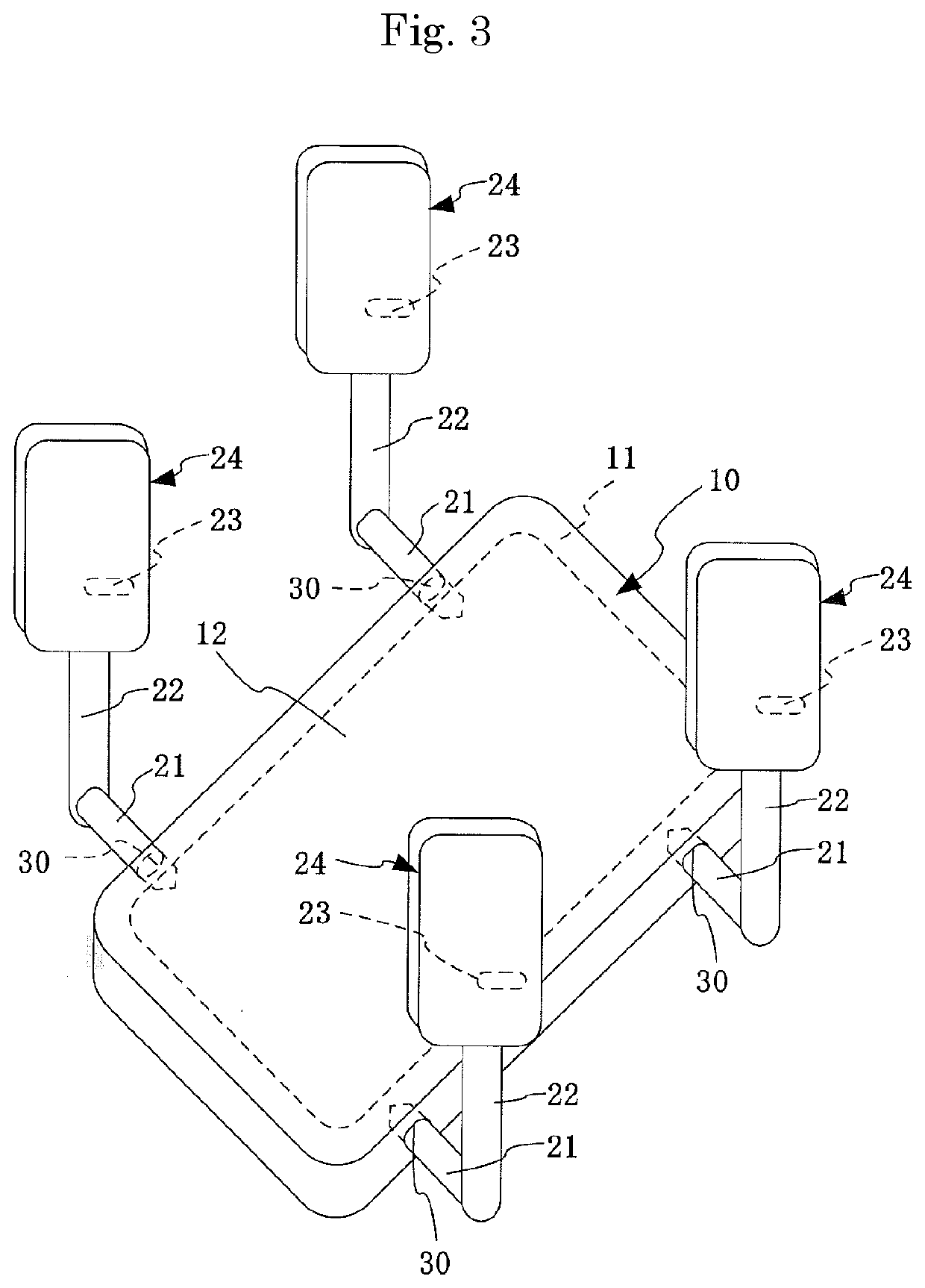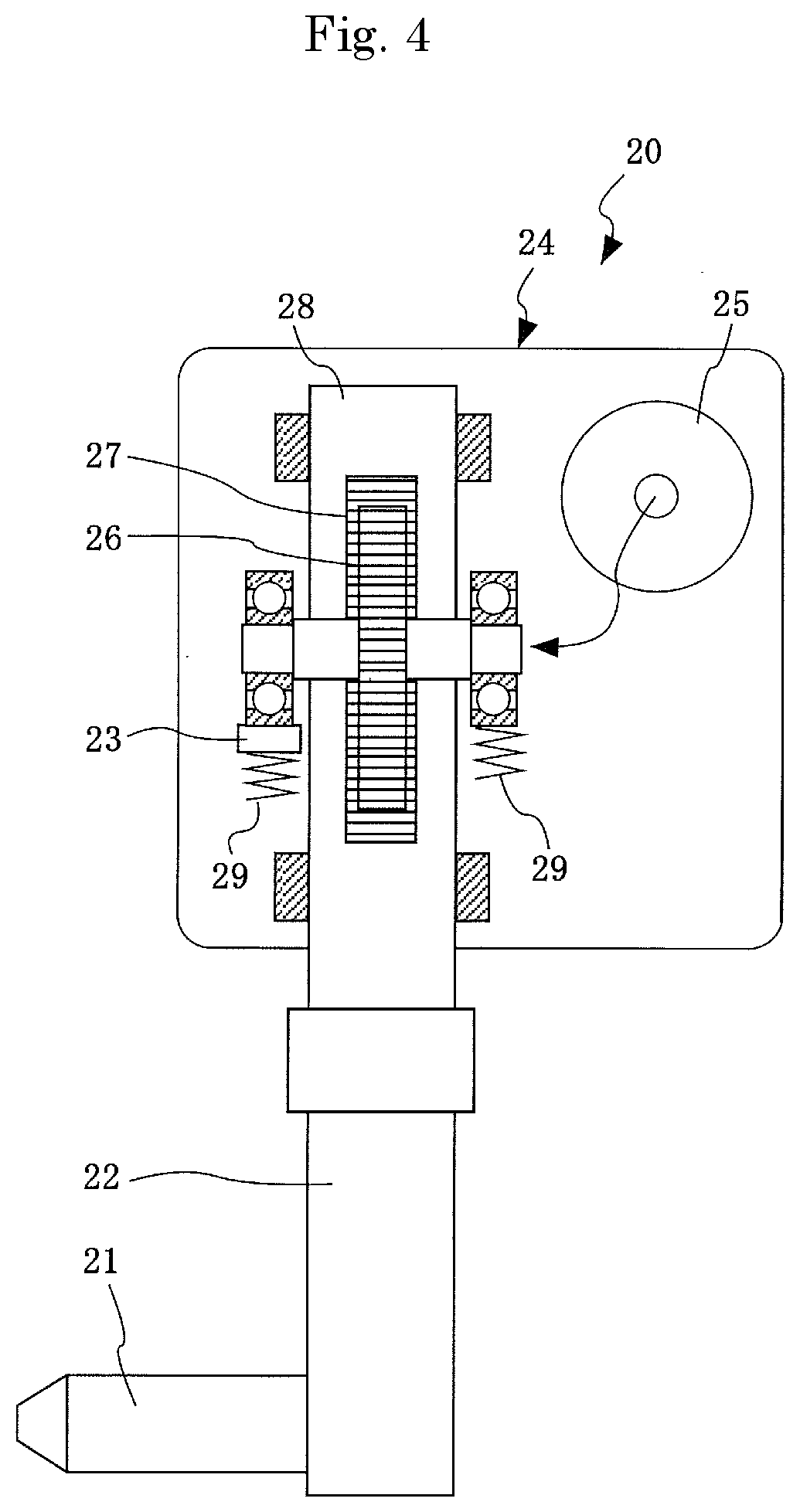Method of separating pellicle and device for separating pellicle
- Summary
- Abstract
- Description
- Claims
- Application Information
AI Technical Summary
Benefits of technology
Problems solved by technology
Method used
Image
Examples
example 1
[0070]The production of a pellicle which was used in example 1 will first be described. A pellicle frame made of an aluminum alloy (outer size 149 mm×115 mm×3.5 mm×wall thickness 2 mm, the flatness of an end surface to be coated with a sticky agent for sticking a mask, 15 um) was accurately washed, then the end surface to be coated with the sticky agent was coated with an acrylic sticky agent (product name: SK-Dyne, SK-1425) made by Soken Chemical & Engineering Co., Ltd. and was left at room temperature for 60 minutes so as to provide the sticky agent, thereafter a separator was placed on an upper surface portion (whose flatness was 5 um) of an aluminum plate which was larger than the pellicle frame and the pellicle frame coated with the sticky agent described above was placed with the sticky agent facing downward. In this way, the sticky agent was brought into contact with the flat separator so as to be subjected to flattening processing. Then, the pellicle frame on the aluminum pl...
example 2
[0073]A pellicle completed by the same procedure as in example 1 was stuck to the same 6025 mask substrate as in example 1 and was left at room temperature for 7 days. After 7 days, the mask substrate to which the pellicle described above was stuck was set on the separation device described above. Here, a separation test was performed while the control of the separation device was being performed by collectively controlling two pellicle frame support pins 21 inserted into the jig holes of the same side on each of the sides. When the operation of the separation device during the separation test was observed, as compared with the case where the four pellicle frame support pins 21 were independently controlled in example 1, a separation strength was slightly increased. However, although the substrate after the separation was visually checked, a remarkable separation residue was not confirmed. The maximum separation strength when the pellicle was separated was 10.2 N.
example 3
[0074]A pellicle completed by the same procedure as in example 1 was stuck to the same 6025 mask substrate as in example 1 and was left at room temperature for 7 days. After 7 days, the mask substrate to which the pellicle described above was stuck was set on the separation device described above. Here, separation was performed while the control of the separation device was being performed by collectively controlling pellicle frame support pins inserted into jig holes. As compared with the case where the four pellicle frame support pins 21 were independently controlled and the separation was performed in example 1 and the case where the control was performed on each of the sides opposite each other and the separation was performed in example 2, a separation strength was slightly increased. However, although the substrate after the separation was visually checked, a remarkable separation residue was not confirmed. The maximum separation strength when the pellicle was separated was 12...
PUM
 Login to View More
Login to View More Abstract
Description
Claims
Application Information
 Login to View More
Login to View More - R&D
- Intellectual Property
- Life Sciences
- Materials
- Tech Scout
- Unparalleled Data Quality
- Higher Quality Content
- 60% Fewer Hallucinations
Browse by: Latest US Patents, China's latest patents, Technical Efficacy Thesaurus, Application Domain, Technology Topic, Popular Technical Reports.
© 2025 PatSnap. All rights reserved.Legal|Privacy policy|Modern Slavery Act Transparency Statement|Sitemap|About US| Contact US: help@patsnap.com



